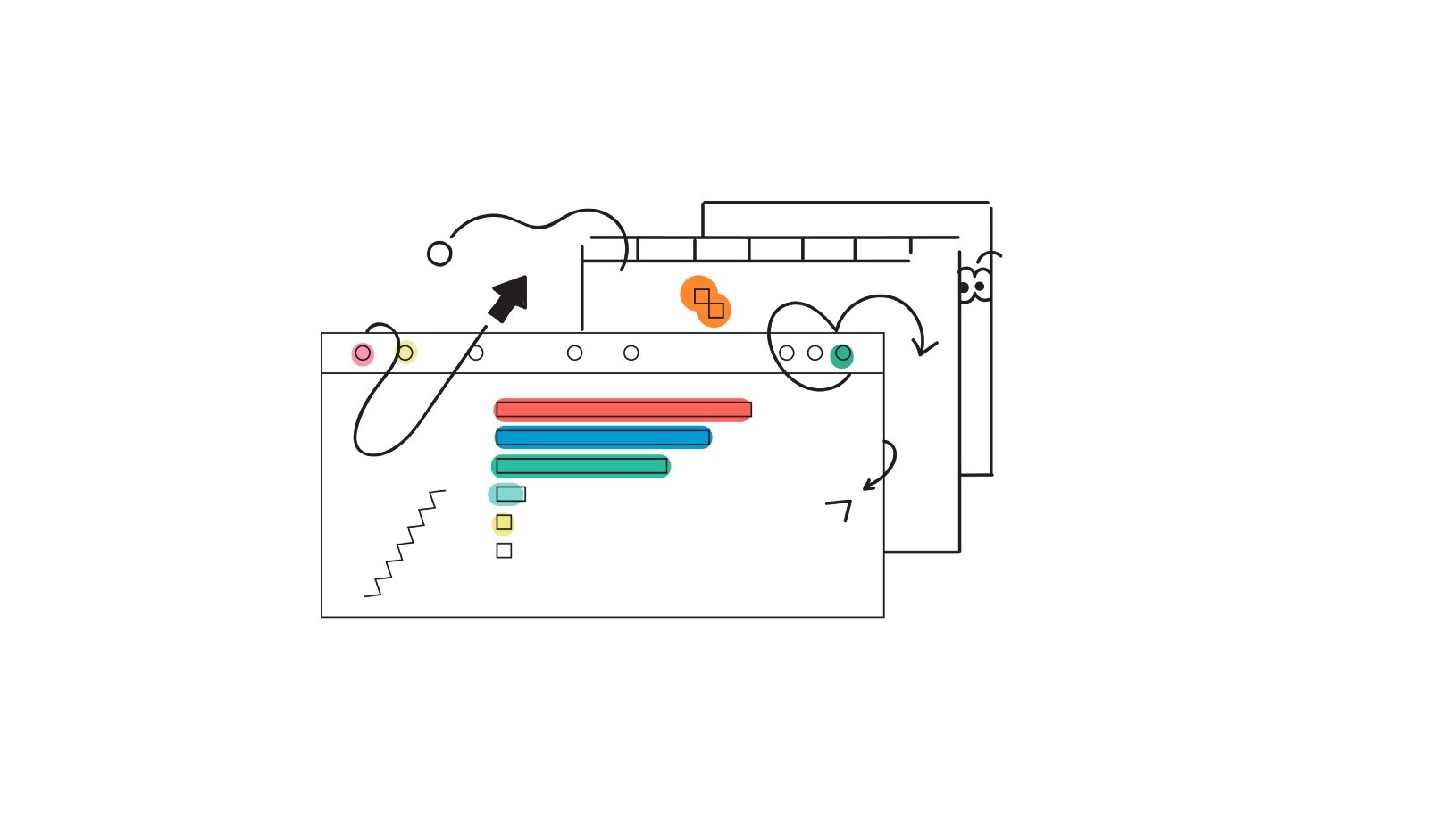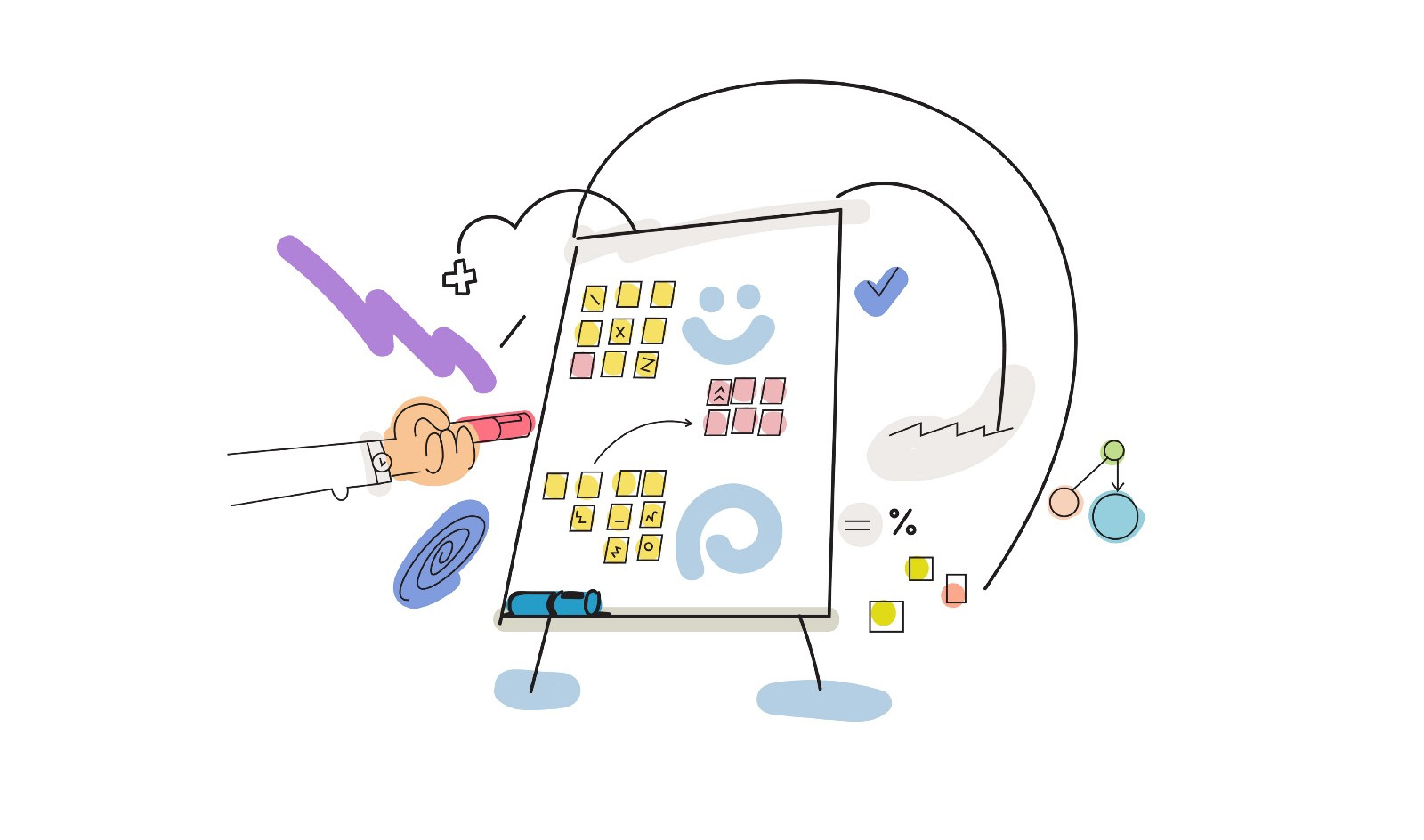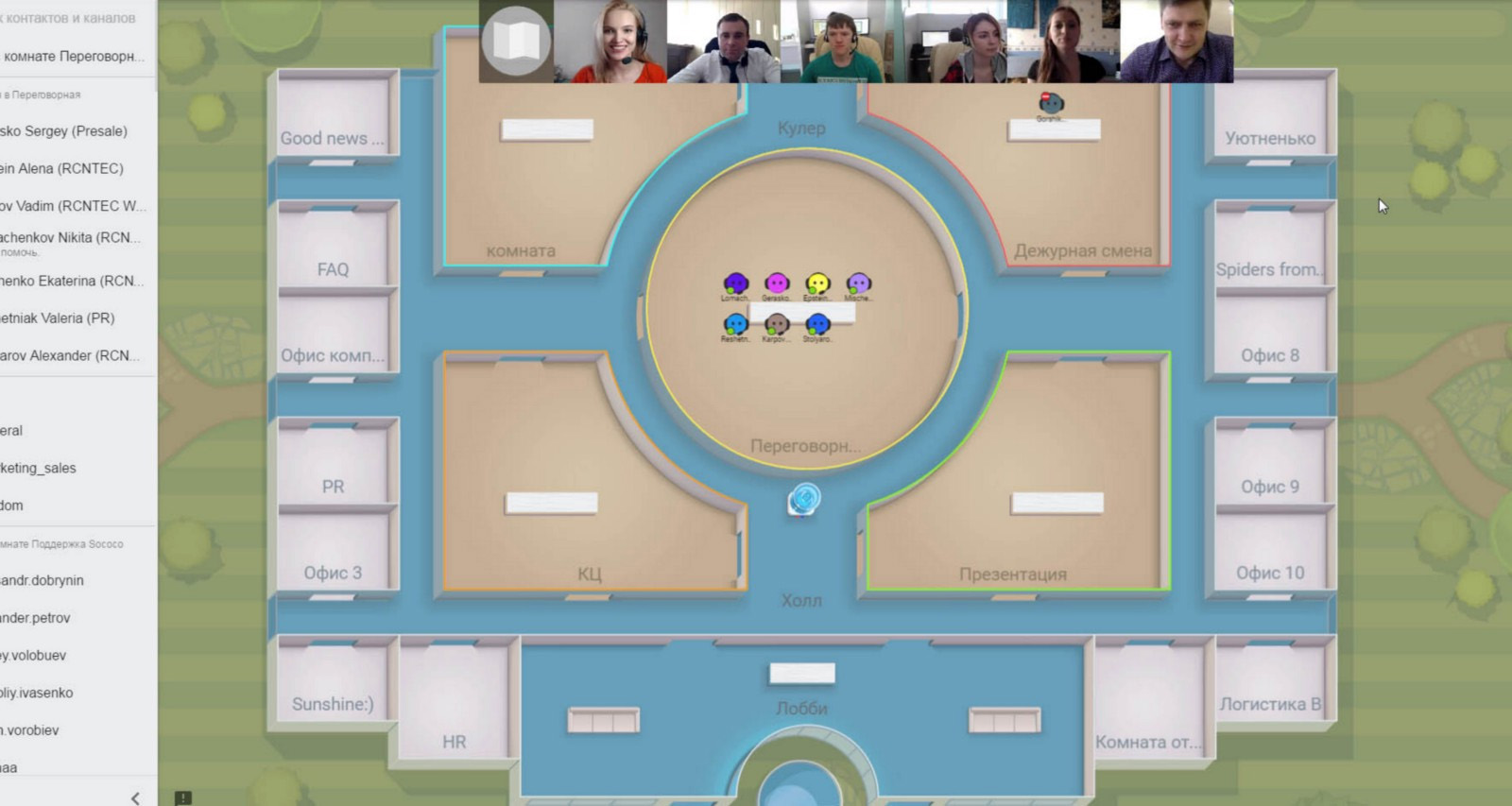How to get a team involved in the search for ideas and get a lot more than ideas
For some reason, creating design layouts and visualizing solutions always arouses great interest among all members of the product team, whether it is a manager who wants to learn Sketch, or a developer who has seen a lot and now wants to make cool interfaces himself, and not ask designers about it. And this is normal when all this is just under discussion. But when it comes to real work ...

Hello everyone, my name is Anya, I’m a product designer at Scentbird NY, an American company, before that I was developing flagship products together with Alfa-Bank’s design team.
I’m very lucky in life, and for some reason I always work with developers who offer the most interesting solutions for the product. And even better than many managers and product owners could offer. And I noticed this thing: the sooner you connect developers to work on a task, the better the result. Under the cut, I will tell you how to conduct brainstorms with the team in such a way as to generate not the most obvious, but effective solutions. Which at the same time is also very simple to implement. And, most importantly, how not to spend a lot of time on it and not get bogged down in approvals.
To properly hold the brainstorm, you need to choose the right topic for it. The task that you bring to the discussion should not be too simple, but it should not be too complicated. If you want to create a roadmap for the next six months, then you better think about it yourself, otherwise the brainstorm will last about the same. Yes, and issues that obviously will have to be long and dreary to coordinate with stakeholders are also not worth raising. Otherwise, so much time will pass between the brainstorm itself and at least some kind of result that everyone will already forget what it was all about.
Ideally, choose what can be implemented in the near future. And in the near future I mean a couple of weeks here. On the strength of 3 weeks.

Your main weapon is the facts. Because for questions like “Why should this problem be dealt with now?” You should be ready to have a solid answer with numbers, otherwise in the minds of your colleagues it will turn into just a strange wishlist or even a wish “Make me beautiful”. You have numbers, there is data, there is analytics - use them during a brainstorm.
Of course, it is useful to tell how much money will bring a new solution to the current problem, if you can at least figure it out. It’s a pretty tangible thing to measure success in money. Another good option is in the clients. Talk with the team about the user pains that you found in the interview. Checked personally - the team is really impressed by the video message from the client, who reports that the service in its current form is inconvenient to use.

Do not try to invite everyone you reach to the brainstorm - there should be few people, but enough to eat 2 whole pizzas (this is about 5-7 people). Of course, this may be one very hungry developer, yes. Ideally, invite the most interested team members.
Well, if you decide to act on this principle, then do not forget the pizzas themselves. Better with a margin.
Divide the meeting in two.
The first half is a discussion of ways to solve the current problem, try to come up with 10-12 pieces. Let everyone who has already chewed their pizza have their say. Be polite, do not interrupt colleagues and let everyone speak out, even if his idea is not very close to you. At the same time, remember that you are here not only as the person who brought the pizza, but also as a moderator - follow the discussion, if someone starts to offtop it very much, return the conversation to the right track.
The second half - the selection of 3-5 best ideas and their discussion. To make sure that everyone understood each other correctly, you can try to draw these ideas right away in scenarios.

Record and sketch all ideas. Flipchart, stickers - and go.
But what if the team is distributed?
Here comes a lot of software for team work, because the problem of communication in distributed teams, frankly, is not only yours.

Sococo - common space and video calling

Miro, figma and other interactive whiteboards, you can stick stickers, write lists and much more

VR chat - I personally have not tried it, but it looks promising. The guys even have coffee.
When all the decisions that you have decided to put into practice, go to the implementation stage, keep your guys up to date, voice their current status - what is agreed upon, what is already in work, and so on, so that they don’t have the feeling that they just chatted and went to do their thing. In fact, it will be interesting for them to see how their ideas expressed at the brainstorm are gradually responding to certain functions of the product, which affects both user convenience and figures for business.
The big benefits that I notice as a result of such meetings are:
Engagement and interest
It is clear that those involved in the creation of an idea or solution are much more interested in the implementation of what was conceived. And the personal interest of the team members is a very, very strong motive, which also plays into the hands of business. It supplants the former inertness, because the team begins to see a simple and transparent way to create a solution - from the brain storm to implementation. From effort to result.
I learn about all the pitfalls before usual
With the help of the brainstorm, you can learn in advance about all the corner cases. Ideas will be offered by guys from your team who are probably more versed in legacy and back-end systems than you. And there will also be less trolling, because no one will want to talk about the absurdity of decisions if these decisions were generated directly by the team members.
Close-knit team
A common transparent goal brings a team together. Firstly, this is another opportunity to chat with colleagues live, and secondly ...
T2M is down!
All of the above items affect the fact that the task is solved faster than usual. And if you are well prepared and correctly present the results of teamwork to the team, then success can be repeated again and again.
It is very likely that for some of the invitees the meeting will seem boring and meaningless, yet "the developers want to write code." Therefore, always make the brainstorms voluntary. And if any of the proposed items does not fit your team, feel free to remove it or replace it with something else. To make your processes the coolest, constantly collect feedback from all team members.

My why
Hello everyone, my name is Anya, I’m a product designer at Scentbird NY, an American company, before that I was developing flagship products together with Alfa-Bank’s design team.
I’m very lucky in life, and for some reason I always work with developers who offer the most interesting solutions for the product. And even better than many managers and product owners could offer. And I noticed this thing: the sooner you connect developers to work on a task, the better the result. Under the cut, I will tell you how to conduct brainstorms with the team in such a way as to generate not the most obvious, but effective solutions. Which at the same time is also very simple to implement. And, most importantly, how not to spend a lot of time on it and not get bogged down in approvals.
Process
1. Choice of task
To properly hold the brainstorm, you need to choose the right topic for it. The task that you bring to the discussion should not be too simple, but it should not be too complicated. If you want to create a roadmap for the next six months, then you better think about it yourself, otherwise the brainstorm will last about the same. Yes, and issues that obviously will have to be long and dreary to coordinate with stakeholders are also not worth raising. Otherwise, so much time will pass between the brainstorm itself and at least some kind of result that everyone will already forget what it was all about.
Ideally, choose what can be implemented in the near future. And in the near future I mean a couple of weeks here. On the strength of 3 weeks.

2. Prepare analytics
Your main weapon is the facts. Because for questions like “Why should this problem be dealt with now?” You should be ready to have a solid answer with numbers, otherwise in the minds of your colleagues it will turn into just a strange wishlist or even a wish “Make me beautiful”. You have numbers, there is data, there is analytics - use them during a brainstorm.
Of course, it is useful to tell how much money will bring a new solution to the current problem, if you can at least figure it out. It’s a pretty tangible thing to measure success in money. Another good option is in the clients. Talk with the team about the user pains that you found in the interview. Checked personally - the team is really impressed by the video message from the client, who reports that the service in its current form is inconvenient to use.

3. Two pizza team
Do not try to invite everyone you reach to the brainstorm - there should be few people, but enough to eat 2 whole pizzas (this is about 5-7 people). Of course, this may be one very hungry developer, yes. Ideally, invite the most interested team members.
Well, if you decide to act on this principle, then do not forget the pizzas themselves. Better with a margin.
4. Time is money
Divide the meeting in two.
The first half is a discussion of ways to solve the current problem, try to come up with 10-12 pieces. Let everyone who has already chewed their pizza have their say. Be polite, do not interrupt colleagues and let everyone speak out, even if his idea is not very close to you. At the same time, remember that you are here not only as the person who brought the pizza, but also as a moderator - follow the discussion, if someone starts to offtop it very much, return the conversation to the right track.
The second half - the selection of 3-5 best ideas and their discussion. To make sure that everyone understood each other correctly, you can try to draw these ideas right away in scenarios.

5. Visualization
Record and sketch all ideas. Flipchart, stickers - and go.
But what if the team is distributed?
Here comes a lot of software for team work, because the problem of communication in distributed teams, frankly, is not only yours.

Sococo - common space and video calling

Miro, figma and other interactive whiteboards, you can stick stickers, write lists and much more

VR chat - I personally have not tried it, but it looks promising. The guys even have coffee.
6. After all
When all the decisions that you have decided to put into practice, go to the implementation stage, keep your guys up to date, voice their current status - what is agreed upon, what is already in work, and so on, so that they don’t have the feeling that they just chatted and went to do their thing. In fact, it will be interesting for them to see how their ideas expressed at the brainstorm are gradually responding to certain functions of the product, which affects both user convenience and figures for business.
The big benefits that I notice as a result of such meetings are:
Engagement and interest
It is clear that those involved in the creation of an idea or solution are much more interested in the implementation of what was conceived. And the personal interest of the team members is a very, very strong motive, which also plays into the hands of business. It supplants the former inertness, because the team begins to see a simple and transparent way to create a solution - from the brain storm to implementation. From effort to result.
I learn about all the pitfalls before usual
With the help of the brainstorm, you can learn in advance about all the corner cases. Ideas will be offered by guys from your team who are probably more versed in legacy and back-end systems than you. And there will also be less trolling, because no one will want to talk about the absurdity of decisions if these decisions were generated directly by the team members.
Close-knit team
A common transparent goal brings a team together. Firstly, this is another opportunity to chat with colleagues live, and secondly ...
T2M is down!
All of the above items affect the fact that the task is solved faster than usual. And if you are well prepared and correctly present the results of teamwork to the team, then success can be repeated again and again.
It is very likely that for some of the invitees the meeting will seem boring and meaningless, yet "the developers want to write code." Therefore, always make the brainstorms voluntary. And if any of the proposed items does not fit your team, feel free to remove it or replace it with something else. To make your processes the coolest, constantly collect feedback from all team members.
All Articles